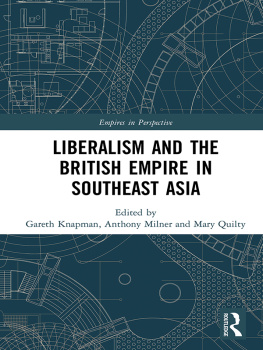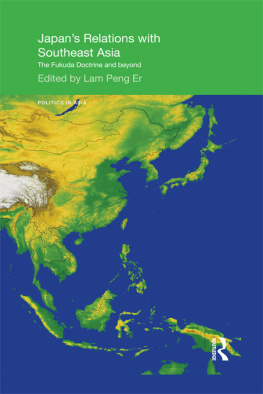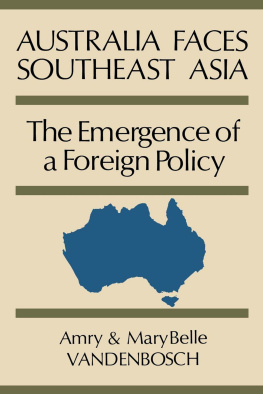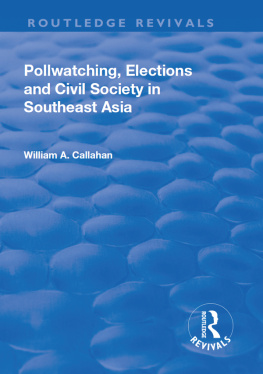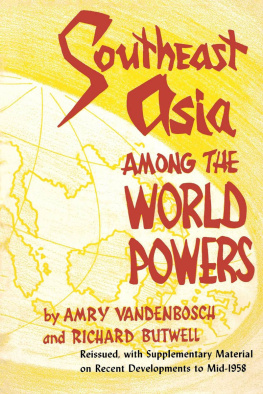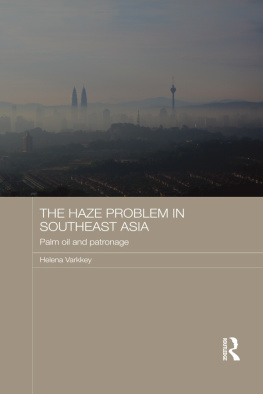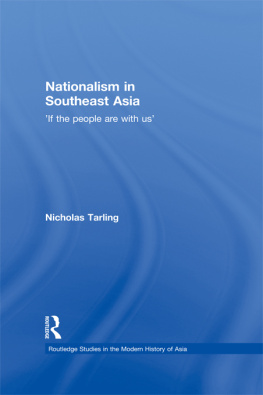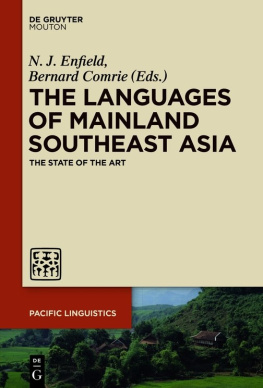THE SOUTHEAST ASIA CONNECTION
The Southeast Asia
Connection
Trade and Polities
in the Eurasian World Economy
500 BCAD 500
Sing C. Chew
First published in 2018 by
Berghahn Books
www.berghahnbooks.com
2018 Sing C. Chew
All rights reserved. Except for the quotation of short passages for the purposes of criticism and review, no part of this book may be reproduced in any form or by any means, electronic or mechanical, including photocopying, recording, or any information storage and retrieval system now known or to be invented, without written permission of the publisher.
Library of Congress Cataloging-in-Publication Data
A C.I.P. cataloging record is available from the Library of Congress
British Library Cataloguing in Publication Data
A catalogue record for this book is available from the British Library
ISBN 978-1-78533-788-8 hardback
ISBN 978-1-78533-789-5 ebook
For my mother
(19232015)
Place of Birth: Medan, Sumatra, Dutch East Indies
Figures and Tables
Figures
Tables
Preface
This book had its origin almost fifteen years ago. In the course of writing my trilogy on world ecological degradation over world history, I came across literature on the Nanhai Trade that discussed the trading relations of China with Southeast Asia. What struck me was the volume of trade, the vast number of kingdoms, and the level of urbanization that existed in early Southeast Asia. It seems to me then that the writings of Southeast Asia, and even now, painted an image of the peripherality of the region, and did not fully account for what has been presented empirically in some of the studies I have read, and especially during the period between 200 BC and AD 500. Unfortunately, at that point in time, other obligations prevented me from pursuing further this issue. The passage of time and the many opportunities extended to me to visit Southeast Asia for lectures, workshops, and colloquia have given me the opportunity to complete this book, which attempts to address this discrepancy, and thus my attempt for a reconstructed historical account of Southeast Asias place in the world economy from 200 BC to AD 500.
Many scholars, colleagues, and students have contributed to the research and the writing of this book. My initial collection of Southeast Asian literature was facilitated by the prompt and generous email responses of Charles Higham and Miriam Stark. Tom Hoogervorst kindly sent me a copy of his doctoral dissertation on Southeast Asia before its publication. Philippe Beaujard provided me with useful comments and critique on the manuscript, and additional literature sources. Tom Hall, Bill Thompson, Wang Gung-wu, Dan Sarabia, Matthias Gross, Alvin So, Bob Denemark, and Mitch Allen read chapters of the manuscript and provided remarks and useful comments. Any errors or omissions are solely mine.
I wish to note the various invitations extended to me to present the themes of this book in various colloquia, conferences, and public lectures in the United States, Hong Kong, Australia, and Singapore. Wang Gung-wu generously made arrangements for me to be a visiting fellow at the National University of Singapore so that I could conduct the research for this book and present some of the themes of this book to the university. I benefited from a brief stay at the Hong Kong University of Science and Technology through an invitation from Alvin So. I also had the opportunity to visit the Sungai Batu excavations in Malaysia, kindly arranged by Mokhtar Saidin of the Universiti Sains Malaysia during one of my regional trips. Invitations from Youngho Chang to give public lectures at Nanyang Technological University on environmental issues provided further opportunity to conduct research for this book.
Alex Melinkoff was a wonderful research assistant, and Kathy Corridan (interlibrary loan coordinator) provided excellent searches for obscure books and articles, and permissions for late returns. Annie Thomsen, who has been responsible for drawing all the maps in my previous books, deserves my thanks as well for this one. I would like to thank my former editor/publisher Mitch Allen, who not only provided editorial comments but also helped to place this manuscript with Berghahn Books. At Berghahn, I wish to thank my editor, Caryn Berg, for her assistance and prompt responses to my queries. I would also like to thank Rebecca Rom-Frank and Lizzie Martinez for their efforts in the production process of this book, and Lynn Otto for her careful copyediting.
The writing of this book was made more relaxing by my dear late friend, Cooper (20102015), who passed away unexpectedly and prematurely. While he was alive, his bark, along with Elsas, reminded me of the need to go for our daily walks along the banks of the Mad River and Clam Beach. Finally, as always, my wife, Elizabeth, encouraged profusely my completion of this project.
Sing C. Chew
McKinleyville, California
INTRODUCTION
Southeast Asia in World History
Macrohistorical Considerations
and World System History
Southeast Asia in World History
Southeast Asias place and contribution to the world economy prior to the 1500s, especially in the early millennia of the current era (first century AD),of an evolving world economy (economy of the world). For the period between 200 BC to AD 500, it was a time of large volumes of trade exchanges occurring via land and sea in an increasingly connected Eurasian world. In Southeast Asias case, the region was connected by land and sea routes crisscrossing its mainland land mass and its archipelago and islands. Southeast Asian goods thus were shipped mainly on the Maritime Silk Roads for exchanges between the East and West of the Eurasian world, and such exchanges rose and fell following the rhythms of expansion and contraction of the Eurasian world system.
To reset the commonly accepted position and status of Southeast Asia in the world economy then, this book proposes to reexamine the past. The object is to offer a revisionist interpretation of Southeast Asias place in world history. From recent archaeological findings and historical literary accounts, a world system of trade connections involving Southeast Asia has existed by perhaps 200 BC or earlier. Such findings on trading goods being exchanged between the Mediterranean and South Asia and eastward to Southeast Asia and China have revealed a set of trading contacts between ports of these regions. Such a system connected Europe, the Mediterranean, the Arabian Peninsula, East Africa, the Persian Gulf, central Asia, South Asia, Ceylon, Southeast Asia, and China through a series of both land and sea trading routes, commonly known as the Silk Roads. Trade exchanges via land and sea, along with the movement of peoples, defined this system. China was at one end, with the Roman Empire at the other end, and central Eurasia, South Asia, and Southeast Asia geographically somewhat in the middle of the system.








